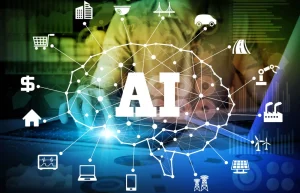
Both VandeHei and Allen’s article and Mattlar’s critique examine the rapid rise of artificial intelligence and its consequences for workers. Still, they offer sharply different interpretations of what is actually driving layoffs. Both agree that AI poses significant implications for the labor market, especially for entry-level white-collar work. Each article highlights growing concerns about job displacement and emphasizes that workers and governments are largely unprepared for what is coming (VandeHei and Allen; Mattlar).
However, the authors diverge in their explanations. VandeHei and Allen argue that AI is advancing so quickly that widespread automation is imminent, potentially wiping out millions of jobs within a few years. Their tone is urgent and predictive, stressing that AI agents will replace humans once they reach human-level performance. Mattlar, in contrast, asserts that companies are not actually replacing workers with functioning AI systems. Instead, he claims corporations are “scapegoating” AI to justify cost-cutting, conceal failed AI investments, and correct over hiring mistakes made during the pandemic (Mattlar). For Mattlar, the threat is not AI itself but corporate misuse of the AI narrative.
Most Persuasive Article
Mattlar’s article is ultimately more persuasive. His argument draws on empirical research from MIT, Yale, and the New York Federal Reserve, and provides concrete examples of companies misrepresenting AI’s role in decision-making. He identifies inconsistencies in corporate statements, such as Klarna’s reversal on its own AI claims, which strengthens his credibility. While VandeHei and Allen raise important warnings, their predictions rely heavily on speculative future scenarios and the statements of a single industry leader. Mattlar’s reliance on data over futurism makes his analysis more grounded and convincing.
Key Takeaways
The articles together suggest two essential truths: First, AI is reshaping the labor market—either now or very soon—and entry-level workers are especially vulnerable. Second, narratives about AI are being shaped by powerful institutions whose interests may not align with the public’s. Whether AI is truly replacing people or merely serving as corporate cover, workers must understand how the technology is used, advocate for transparency, and prepare for rapid changes. Both articles highlight the urgency of public awareness, government planning, and ethical corporate behavior.
a. What I Learned About Using AI
I learned how significantly the prompt’s quality shapes the output. When the instructions were specific, such as asking for a comparison or MLA formatting—the responses were clearer, more organized, and more useful than broad or vague prompts.
b. Thoughts on the Responses
The responses were generally helpful and surprisingly detailed. Occasionally, the tool made assumptions or overgeneralized, requiring refinement of the prompt. Overall, the tool worked best when I treated it like a collaborator and gave clear, structured directions.
c. Emotional Reaction
Using AI was a mix of curiosity and caution. It felt efficient and empowering, but also slightly unsettling, expressing the concerns in the articles themselves. Relying on AI for analysis highlights its potential while also raising questions about accuracy and dependence.
d. Where We Are Headed & How to Manage It
AI will likely become a standard tool for research, writing, and workplace tasks. To manage this transition responsibly, we need transparency, better public education, and ethical guidelines. Individuals must learn how to use AI effectively, while institutions must create safeguards to prevent misuse, inequality, and economic displacement.
0 Comments